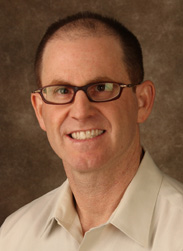Cryosurgery is the treatment of lesions with the application of a cold substance. In most instances, liquid nitrogen is used to destroy the lesion(s).
After treatment with liquid nitrogen there may be some burning sensation or pain that can last up to 24 hours. The discomfort can be relieved with extra strength Tylenol or similar pain relief medication.
Within 24-48 hours, a blister may form. If a blister does not form, the treated lesion will begin to dry up or crust over, during the next several days to 1 week. 2-4 weeks or longer may be required for the lesion to more completely heal and fall off. No specific wound care instructions apply to this situation. Bathing, showering, swimming is permitted immediately following treatment without any specific waiting period. You may begin applying cover-up or make-up to the treated sites after 1-2 days if no blister forms. If treated lesion(s) might be subject to trauma, you may desire to protect these site(s) with a bandage. If warts were treated, you may begin applying Duofilm / Occlusol or other similar (sal-acid) product daily as per the package insert instructions, or otherwise as directed after 2-3 days if no blister has developed. (If a blister forms, you must wait several weeks until complete healing before applying Duofilm or similar product.)
However, if a blister does form, leave the blister intact as best as possible and keep the site/s covered/protected as needed with a bandage. The blister will dry up. If the blister becomes very tense or uncomfortable, you may open the blister with a clean pin or small sharp pointed nail scissors, taking care to first wipe the needle point or scissor blades with an alcohol soaked cotton ball and avoiding injury to the delicate, sensitive underlying tissues. Allow the fluid to drain. Leave the blister roof intact for several more days, as it is “young” and may not yet be fully formed nor separated from the delicate, sensitive underlying healthy tissues. This blister roof also acts as a temporary biological “bandage” minimizing discomfort and protecting the area until further healing has occurred. You must now begin daily wound care. Once the blister has ruptured and is open to the outside environment, begin twice daily wound care as follows and keep the area covered/protected until healed. (As long as there is an intact blister (roof), wound care is not needed, but a protective bandage should still be used.) Several days after the blister has already ruptured, the blister roof may be more completely removed carefully with scissors. (Waiting several extra days allows the underlying tissues to have healed for few more days, and thus at this point the wound(s) are more healed and less painful and tender.)
Avoid sun or wear sunscreen (SPF 30 or >) and minimize trauma to treated sites until completely healed; (i.e lesion/s have fallen off and color has returned to normal). Usually, the treated site/s return to your normal skin color. However, occasionally, the treated sites may heal slightly lighter or darker than your normal skin color, depending upon various factors, including lesion type and qualities (e.g. thickness. location), skin type, sun exposure, etc. (The treated area/s may be red to pink after the lesion/s drop off for several weeks or more.) Usually, treated sites are completely healed by 4-6 weeks. If not, or if lesions remain or new lesions are present, please call to schedule a follow-up visit.
Remember, depending on the lesion treated, several treatments may be required, as is often the case with treating warts. Treatments (for warts) are usually spaced 2-4 weeks apart unless directed otherwise. (Many people develop new and/or recurrent keratoses at regular intervals, requiring maintenance treatment at 3-12 month intervals, depending upon individual characteristics and MD recommendation.) (Repeat treatments (even for the same lesion/s) are always charged again, as is customary.)
Instructions for LN2 Wound Care if a blister forms and ruptures (Twice daily until healed):
1. Wash your hands with soap and water.
2. Clean the blister site(s) with soap and water or peroxide diluted in half with water, then pat dry.
3. Apply topical antibiotic ointment (e.g. Polysporin or Bacitracin).
4. Cover with bandage loosely until blister is dry, or completely healed if desired.
5. Call the office if signs of infection occur: Increasing or persistent redness, swelling, heat, pain, thick yellowish discharge after several days (Infection cannot occur if a blister has formed, but is still intact. Infection is extremely rare if a blister does not form at all.)
